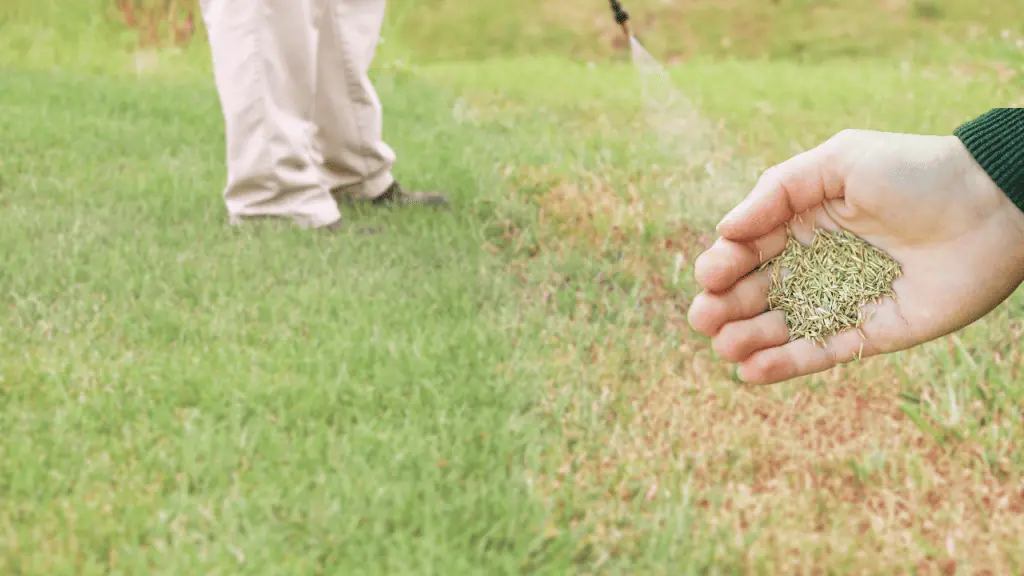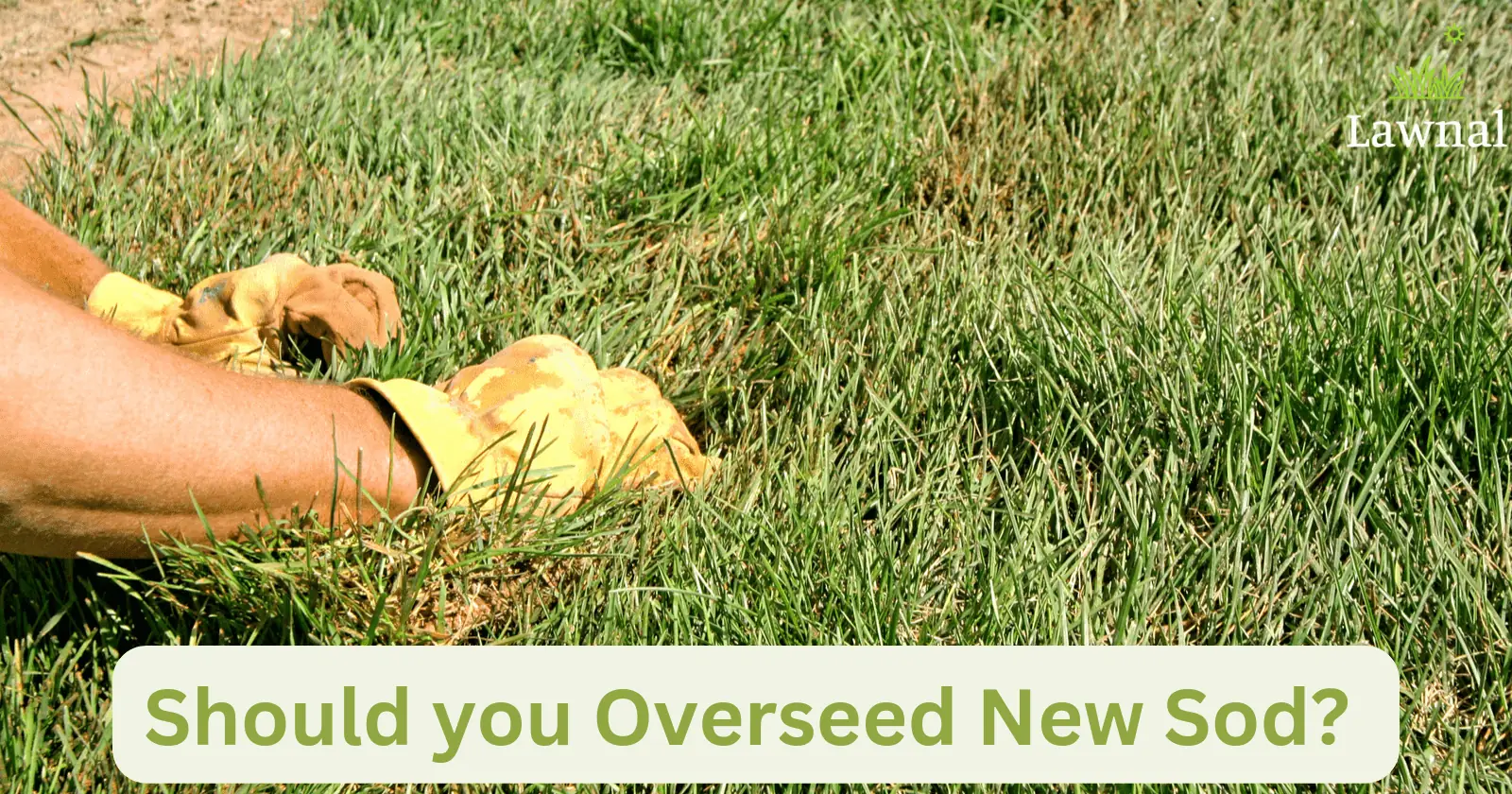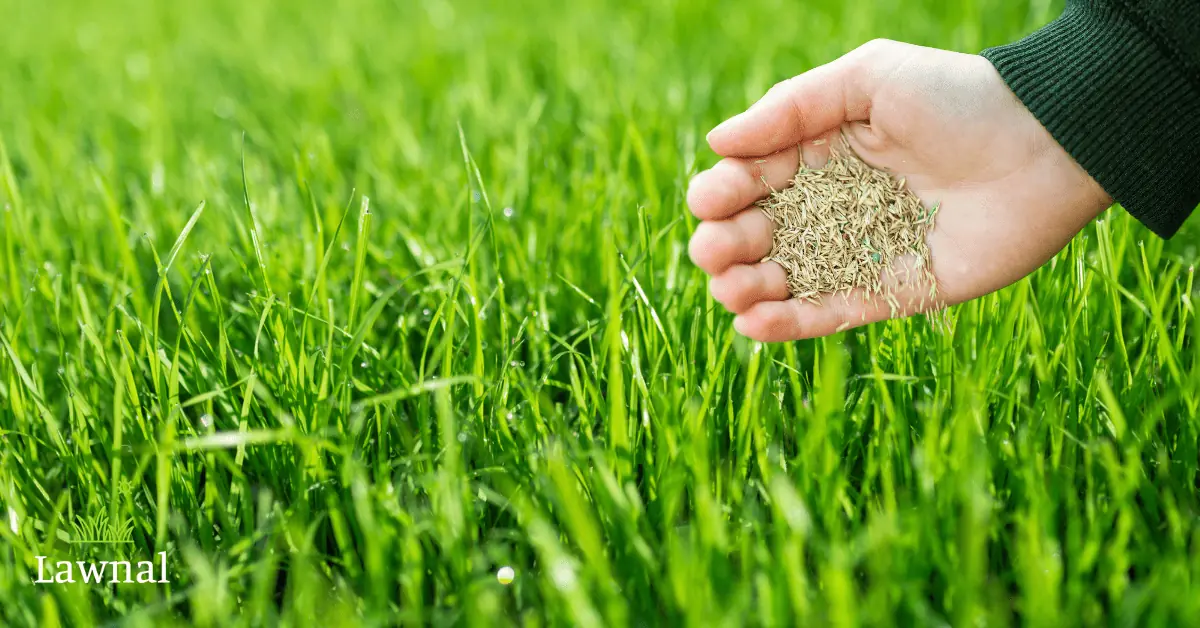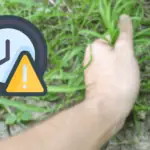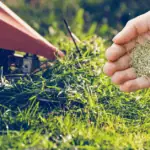A green, healthy, and thriving lawn is the envy of any neighborhood, but weeds can present many challenges, leave your lawn shabby, and increase turf density. But with weeds everywhere, there’s a question of whether to kill weeds before overseeding.
According to some experts, you should overseed the lawn in the fall after eliminating weeds in late summer. Your other option is scalping the lawn-infested weed, raking the debris, and spreading your grass seed.
Whatever the case, this article helps you to understand the ideal time to deal with weeds while overseeding your lawn.
Should you Kill Weeds before Overseeding?
Yes, it’s best to kill weeds before overseeding your lawn, and there’s more. You should remove the weeds from your lawn at least six weeks before overseeding, especially if applying a post-emergent herbicide. On the other hand, you can use your hands to pull the weeds out.
Generally, weed killers affect seed germination. For this reason, experts recommend putting a lot of time between weed application and overseeding. In most cases, product labels provide information about the waiting period.
Since fall is the best time to overseed lawn, late summer is an excellent time to apply a post-emergent weed killer. When the fall season comes, you’ll already have enough time (about 4-6 weeds), making it safe to overseed your grass.
How To Overseed a Lawn With Weeds
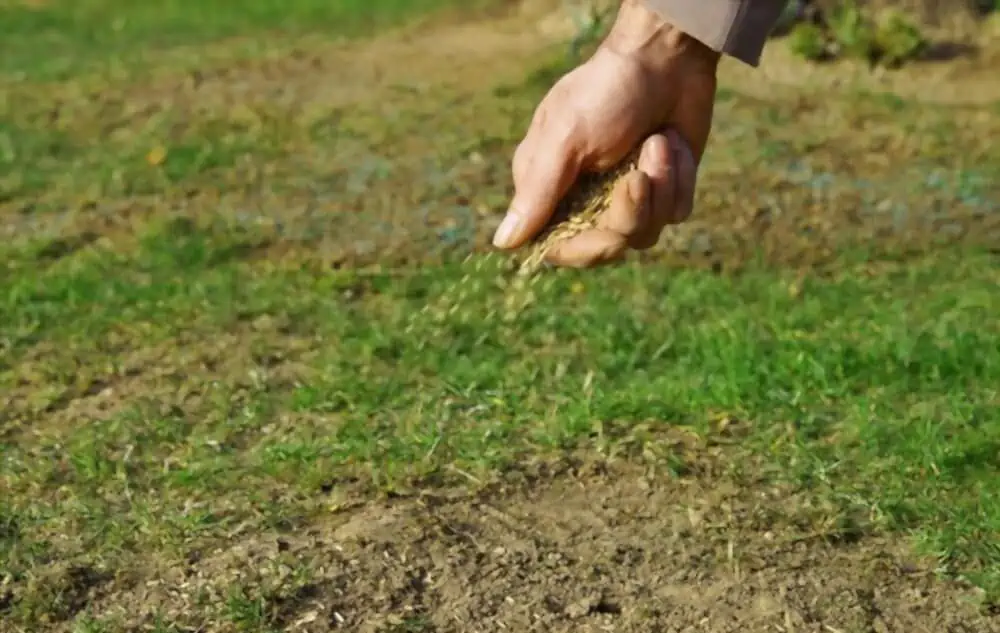
Seeing weeds should take nothing away from your resolve to have a better lawn. You know it’s best to kill weeds before overseeding. The following tips will help you overseed your lawn with new grass seeds.
1. Manually Pull the Weeds
Use your hands to remove the weeds manually. You might have many weeds, with most of them grown and visible. Instead of applying chemicals, pull them out of the soil. You’ll also save your grass seeds from poor germination.
If you want to use a weed killer before overseeding, ensure you’re not running against time. Apply the chemicals for enough time to break down entirely before spreading the grass seed. Many pre- and post-emergent weed killers have instructions about the waiting periods before you plant grass seed.
Note that some weeds, like crabgrass die off when the weather becomes cooler. Additionally, you can overseed your lawn with annual weeds on the lawn but do so late in the fall. When spring season starts, your lawn will grow thick enough to choke out most annual weeds.
Follow the tips below to pull weeds with your hands:
- Water the lawn deeply so that the soil is soft.
- Use your hands or weed puller to remove the. weeds
- Dispose of the weeds
2. Set Mower on the Lowest Setting
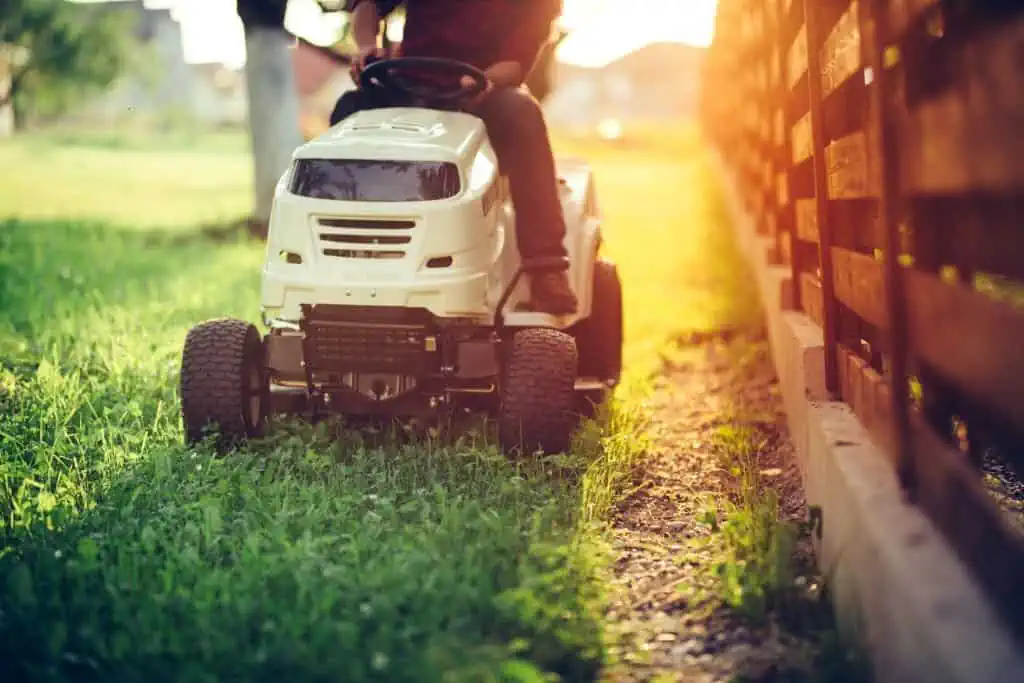
When it’s time to mow the lawn, set the lawnmower to the lowest possible setting. This will help you scalp the lawn you want to overseed. Also, scalping will increase seed-to-soil contact, improving the seed germination rate.
The lawnmower’s deck should be as low as possible; anywhere between 1.5 and 2 inches works fine. This setting is ideal for a lawn without too many weeds. For a level lawn, even an inch off the ground works to trim the lawn. However, a bumpy and uneven lawn means you should set the mower’s blades higher at about 2 inches or more.
Further, experts recommend bagging the clippings of lawns with weeds that have gone to seed. Doing so prevents the weed seeds from spreading all over your yard and regenerating.
3. Remove Grass Clippings from the Turf
A rake is handy for this part. Use it to remove the grass clippings and other debris covering the soil. Raking also loosens up the topsoil, making overseeding all the easier.
If you adjusted the mower to cut higher, it’s possible to have a lot of thatch left on the soil surface. Use a heavy-duty rake for such areas, removing any debris that can prevent your grass seed from having good contact with the soil. This helps the seeds germinate properly.
In addition, a rake takes care of moss that may be growing under the grass in your yard.
4. Dethatch Your Lawn
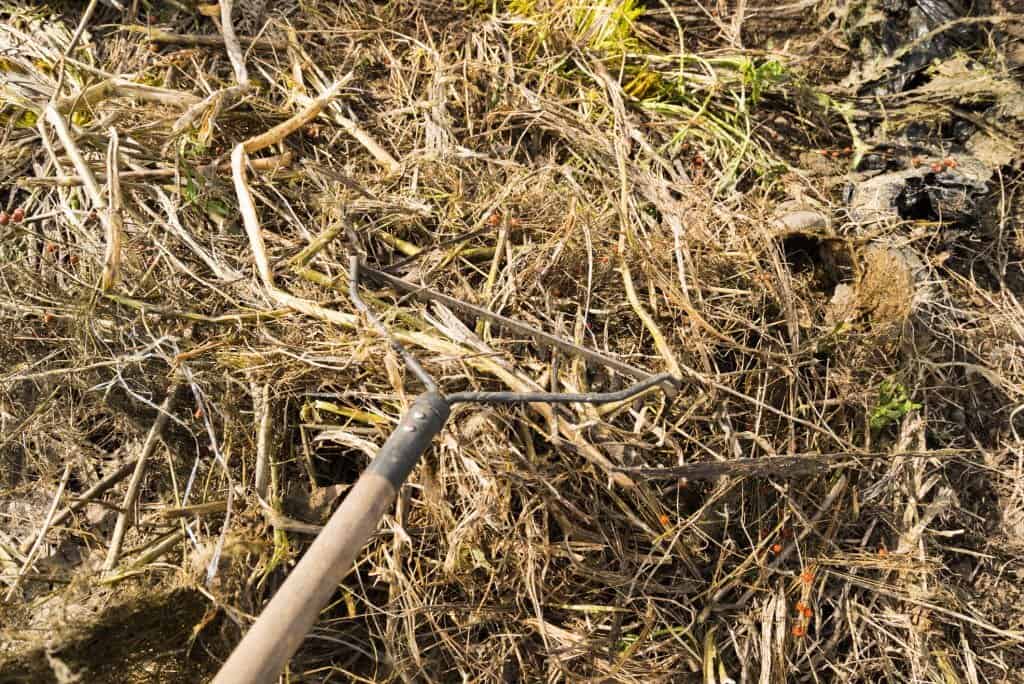
While a thick layer of thatch can help your lawn thrive, it can cause seed-to-soil challenges. Using a detacher will help you reduce the thick thatch and collect the bagged trash. Throw them away or turn them to compost.
Conversely, use a power rake over the weedy lawn to loosen up any thatch and tangled grasses.
5. Aerate Your Soil
When the fall season comes around, expect the soil to be compacted, which means a slow grass-growing rate, while weeds grow faster. It’s time to aerate the lawn after pulling out the weeds, mowing your lawn, and removing the thick thatch.
Ensure you aerate its core so the plant easily absorbs air, water, and nutrients and reaches the root zone. With the cores you’ve created in the soil, expect improved seed-to-soil contact when you overseed.
6. Spread Grass Seed and Rake Lightly
Now, it’s time for proper overseeding. Use a lawn spreader to spread grass seeds over the prepared areas. Ensure that you follow the recommended spreader settings for the type of grass seed you’re overseeding your lawn with. Put down enough to guarantee a thick and full turf.
If you want the best results, plant the grass seeds in opposite directions. Additionally, let the grass seeds enjoy good contact with the soil for proper and faster germination. There are tools to help you do this, including a water-filled roller or the back of a metal rake. They will establish the recommended contact between the soil and your grass seeds.
Gently rake in the grass seed to help the seeds come into contact with the soil and grow properly. If you used a spreader or your hands to spread the seeds, that’s insufficient for proper contact with the ground. That’s why a rake comes in handy.
Use it to gently take in the seed over the overseeded areas to improve contact with the soil and promote faster seed germination. Also, raking prevents water from washing your seeds away during irrigation.
7. Lightly Water Your Lawn
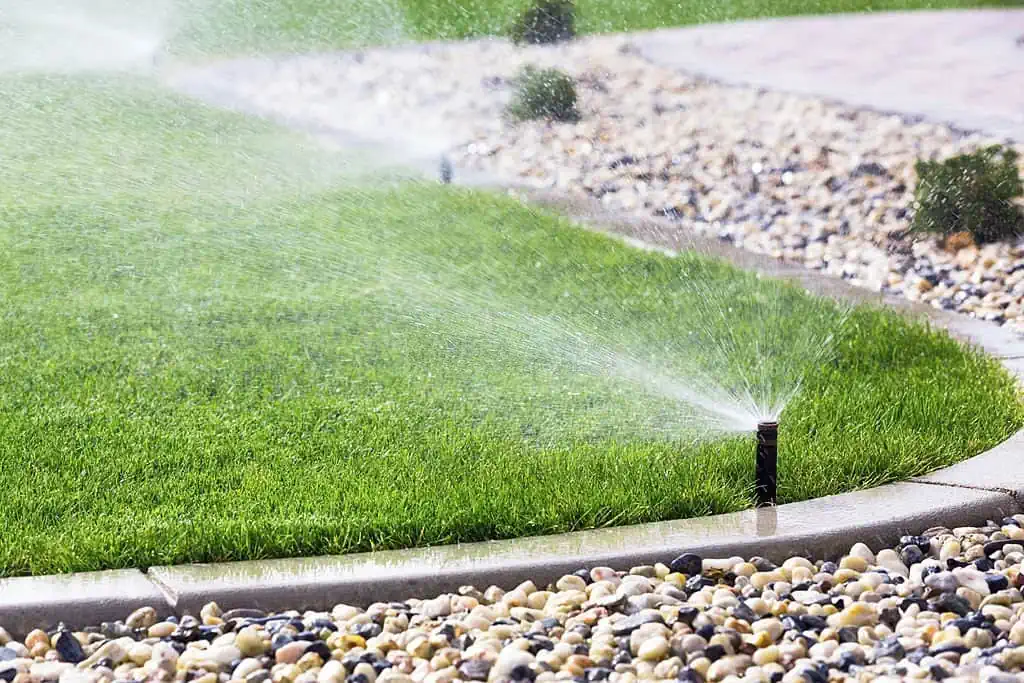
Water is essential to the process; however, you should lightly water the overseeded area for the grass seeds to germinate.
Avoid heavy sprinklers at this time. Using them can erode the seeds away from the area you’ve overseeded.
Controlling Weeds after Overseeding
Weeds will still thrive to pop up after overseeding and watering. You’ll notice them immediately after your grass seeds start to germinate. However, it’s not the time to apply weed killers and chemicals. If you do so, the herbicides can kill or weaken the young grass shoots.
The ideal thing to do is wait for the grassroots to firmly establish themselves in the soil. They should be mature enough to withstand the effects of chemicals.
Wait until the roots become established and the crown matured enough to resist the strength and effect of the chemicals. In the same way, abound equipment like power rakes because it disrupts lawn surfaces. Use a hand rake as they cause less disruption and don’t leave bare patches on the lawn.
Conclusion
Overseeding carries many benefits, including helping you achieve a healthier, fuller, and thicker lawn. Also, your lawn will resist pests, diseases, and weeds better.
However, weeds always feature in yards, often making overseeding difficult. That’s why it’s best to kill weeds before overseeding your lawn.
Now that you know this, follow the steps in this article, such as manually pulling the weeds out, mowing, aerating, and watering. This way, you can have the lawn you desire.
